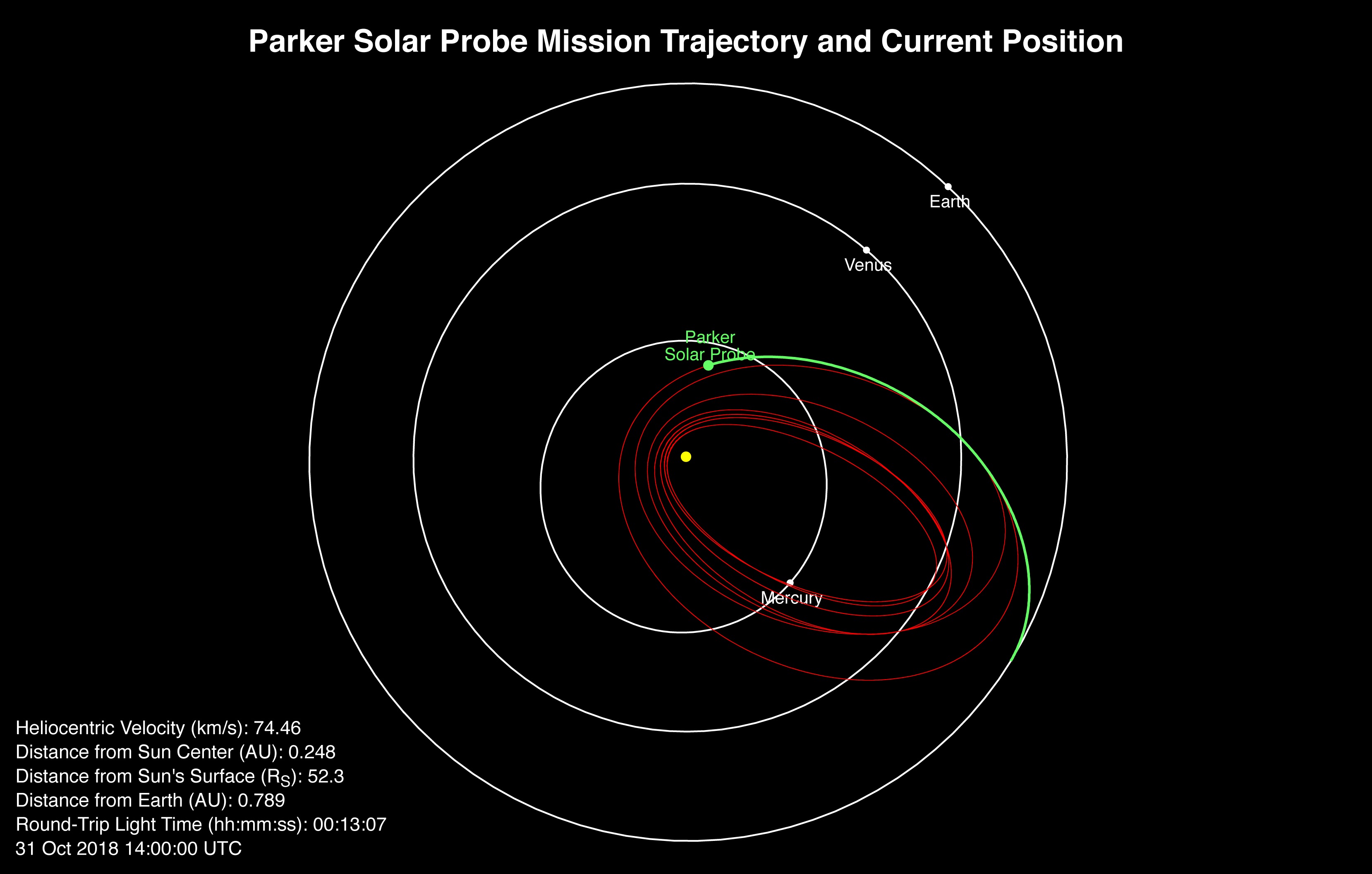NASA's Parker Solar Probe Just Made Its First Close Pass by the Sun!
One of humanity's newest spacecraft faced a harrowing test late Monday night (Nov. 5), darting just 15 million miles (24 million kilometers) of the surface of our sun.
That spacecraft is NASA's Parker Solar Probe, which launched in August with a daring mission to study the star that shapes our lives. To do so, it is flying a course of 24 close loops around the sun, the first of which reached what scientists call perihelion — the moment of closest approach — Monday at 10:28 p.m. EST (0328 GMT Nov. 6).
But there won't be much of anything to watch or listen to during the daring approach, even for the scientists and engineers who run the mission. [The Greatest Missions to the Sun of All Time]
All throughout the few days surrounding perihelion, the spacecraft is essentially on its own. That's because the sun is such a powerful source of radio-wave light that it drowns out the spacecraft's communications with Earth.

And the spacecraft isn't just responsible for independently taking measurements during that time — it also needs to protect itself from the overwhelming heat of the sun. To do so, it will continuously tilt itself to keep its thermal protection shield between the star and the instruments.
Parker Solar Probe's first report back to Earth will be just a beep, according to a statement from the Johns Hopkins University Applied Physics Laboratory, which manages the spacecraft. It has a repertoire of four different options, one of which means everything is fine. Once the engineers behind the spacecraft hears that first beep, they'll have a better sense of what to expect from the first delivery of detailed science data, due in early December.
By that time, the spacecraft will already be well on its way out from the sun as it prepares for its next orbit. It will achieve two more perihelions in 2019, one in April and one in September. Then, next December it will complete the second of seven Venus flybys, which nudges the spacecraft's trajectory gradually closer to the star.
Get the Space.com Newsletter
Breaking space news, the latest updates on rocket launches, skywatching events and more!
During tonight's maneuver, the spacecraft will be traveling at more than 213,000 mph (343,000 km/h). (At the end of October, the Parker Solar Probe broke world records for fastest speed and closest approach to the sun.)
As the $1.5 billion Parker Solar Probe mission unfurls over the course of seven years, each perihelion will sneak closer to the surface of the sun, with the spacecraft in the end dancing less than 4 million miles (6 million kilometers) above our star. Those approaches will also become faster, with its final perihelion clocking in at 430,000 mph (700,000 k/h).
Email Meghan Bartels at mbartels@space.com or follow her @meghanbartels. Follow us @Spacedotcom and Facebook. Original article on Space.com.
Join our Space Forums to keep talking space on the latest missions, night sky and more! And if you have a news tip, correction or comment, let us know at: community@space.com.

Meghan is a senior writer at Space.com and has more than five years' experience as a science journalist based in New York City. She joined Space.com in July 2018, with previous writing published in outlets including Newsweek and Audubon. Meghan earned an MA in science journalism from New York University and a BA in classics from Georgetown University, and in her free time she enjoys reading and visiting museums. Follow her on Twitter at @meghanbartels.









